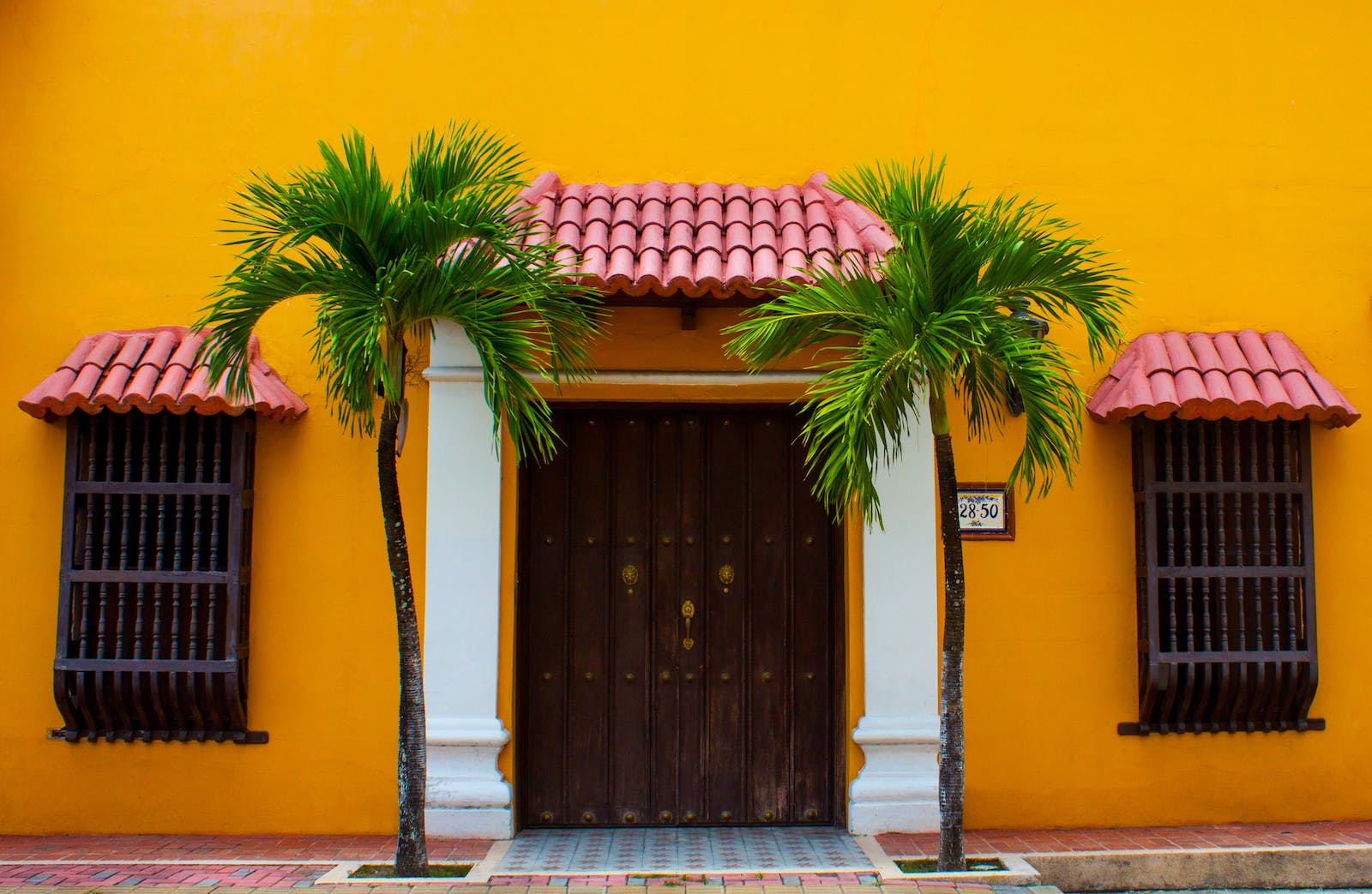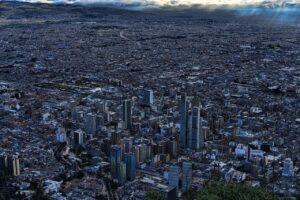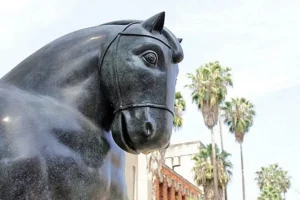I think that Colombia is a country that is really worth visiting without having too many problems but, at the same time, taking into account a certain degree of risk thefts essentially.
I’ll talk about how to travel in Colombia while avoiding the most common and frequent dangers in this post.
Thefts happen, it’s no mystery, sometimes thieves carry a weapon or something similar with them to intimidate the person they are luring, just for show: the advice, which is also the most obvious, is not to give in to fear, avoid resistance e give what you have in your pocketwhich is why it is advisable to walk with the bare essentials on you, leaving money, credit cards, passport and valuables in the hostel.
Although security has increased in recent years, believing that we can behave as we would in Europe or South East Asia is naive. It is not so.
In Colombia the cost of authenticity is paid with a particularly high level of attention but you get used to it quickly.
For further information read the following posts – How to organize a trip to Colombia e What to do in Bogota in two days
12 top tourist attractions and things to do in Medellin

The violence that has characterized the life of the country for too long has left traces and scars that can be seen, or rather, felt.
All precautions that apply throughout the world must be taken literally and seriously, It doesn’t mean that traveling in a group is safer than going alone.
There is a very common warning: do not give papaya not to trust, which was often repeated to me and which simply means not to believe and rely on everyone but to take the proposals that arrive with due caution, especially when walking the streets.

Whoever wants travel to Colombia independently he must be trained to be very careful, even if the recommendations of the local people, marked by difficult years, can lead to paranoia, including me!
However, I don’t think you want to lock yourself in a hostel every night in a country where the nightlife is so fantastic: pop into a party bus, and party in a group, but don’t forget to watch your drinks.

Dangers and troubles in Colombia and rules of conduct
In cities like Medellin you can breathe an almost magical atmosphere European citybut security is more illusory than real, never let your guard down. Big cities are the places to be most carefulbut at the same time where it is easier to camouflage.
Since I was little, when I find myself in a place I don’t know, I adopt a vague and discreet attitude.wallpaper”.
Easily summarized as follows:
- I don’t flaunt valuables (I had nothing to avoid having to think about, no camera or cell phone)
- I don’t dress flashy when inaugurating the new wardrobe
- I don’t speak out loud in a language other than Spanish (***take advantage of the fact that large urban centers are multi-ethnic, there are whites, mestizos (Spanish with Indio) indigenous, blacks and you are just another shade of color in in the middle of the crowd!
As regards the issue of documents and money, whether you sleep in a hotel or hostel is important put away passport, credit cards e money in a lockable cabinet (even a child could open them, but do it anyway), if there is no locker, trust the hotel and give at least your passport and whatever you deem appropriate to the reception. It’s always instinct that guides you, you have to trust someone.
When you go out you have to bring with you only what is strictly necessary, an extra in case of problems, a copy of any document that identifies you. If you follow this practice, always, after a while you will get used to it and you will feel as safe as possible.
In Colombia they say that if you drop a seed on the ground something will always growso if you forget objects around, I don’t think you will find them again, but you will certainly make someone happy who will reuse or sell what you have “sown” around.

Colombia, America, consumerism and easy theft
Colombia is far west, a Very consumerist countryin many ways pro-American also due to geographical proximity, and there is a large interest in “things”brands and so on.
For this reason, a child from a poor, black ghetto, instead of going to buy food, if he finds himself a little overweight, goes straight to the market to buy a pair of fake Nike/Adidas, just like his role model, a singer. Latino who made his fortune in the USA with Puerto Rican bachata or the Colombian sauce, it doesn’t matter.
But it is only the impression and the most superficial truth. If you look carefully, in Colombia things are just things.
The identity and social belonging to a class and/or ethnicity is very strong: even pre-Columbian tribes manage to coexist with North American life models, just as Spanish colonization failed to wash away “primitive” customs and beliefs, and I have yet to discover the recipe for such coexistence but I only hope it continues like this.
In the end, being relieved of things that then become part of the great cycle of object recycling can also become aspiritual experiencewhich calls into question one’s level of attachment to the thing and… well, while I was in one of my philosophical reflections on the meaning of objects in Far Western societies, my trekking shoes disappeared from Taganga beach and so, I returned home barefoot, but still happy.
Instead of doing like me, who wanted to challenge fate by going around without any guide or map, alone, to test my indian wisdom (the native’s sixth sense) buried for years and years in Europe I recommend you rely on someone.
You will avoid thinking too much about possible kidnappings, scams by narcos and gratuitous violence… it doesn’t seem like a small thing to me!
Instinct and common sense – Remember that you are not at home
However, if you want to take a reckless trip like myself, Follow your instincts and talk to other travellers in hostels, true oases of tranquility in Colombia: there are many and they are everywhere.
I felt so at home that in one I decided to stay there and work as a volunteerin exchange for room and board, right in barrio la Candelaria of Bogotaa level “3” on the 1-6 scale of social strata and considered very dangerous also due to its proximity to the so-called “Bronx” or the 10th street with 15th street.
One evening a couple of globetrotters who, according to them, were very confident and shrewd, very young, an Englishman and a Norwegian, invited me to follow them to a truly unhealthy Barrio, the name itself a program, “the picha block”, or march.
This barrio is a neighborhood of Bogota where for years daytime business and shops have failed miserably and which today is used purely as nightclubs, nightclubs and sauce shops, with high prices and a palpably deviant atmosphere, even for me who loves watching certain decadent shows in big cities.
After all, smiling fearlessly and confidently in the face of risks is a good way to visit Colombiabut laughing at Colombians, to the point of mocking them for their supposed low level of civility, with dated Eurocentric attitudes is disrespectful!
I would also avoid talking about the most taboo topic of all: cocaine, cause of many armed conflicts and consequently displaced families, crime, alcoholism and lots and lots of blood.
Speak instead of peace: Paz is the word of the moment.
To summarize, these basic advice for travel safety in Colombia
- Don’t walk alone in the dark
- Do not react in case of robbery
- Bring with you the bare essentials
- Always walk with a copy of your document
- DO NOT GIVE PAPAYA
- Dress discreetly and do not show off valuables
- Don’t go looking for drugs
- Let local people explain the right behavioral codes to you
Organize your trip to Colombia with local operators
Rely on local operators and dedicated Travel Designers to design and implement the trip to Colombia
Click here
Disclaimer: In this post, some of the links provided are affiliate links, which means I may earn a commission if you make a purchase through these links. However, this does not incur any additional cost to you. The commissions I receive through these affiliate links they help fund and support my blog, thus maintaining its independence and lack of sponsorship. I always strive to provide you with the best information and advice possible, based on my personal experience and research. I would like to underline that your support is essential to keep this blog alive and continue to provide you with quality content. Thank you for your support!





